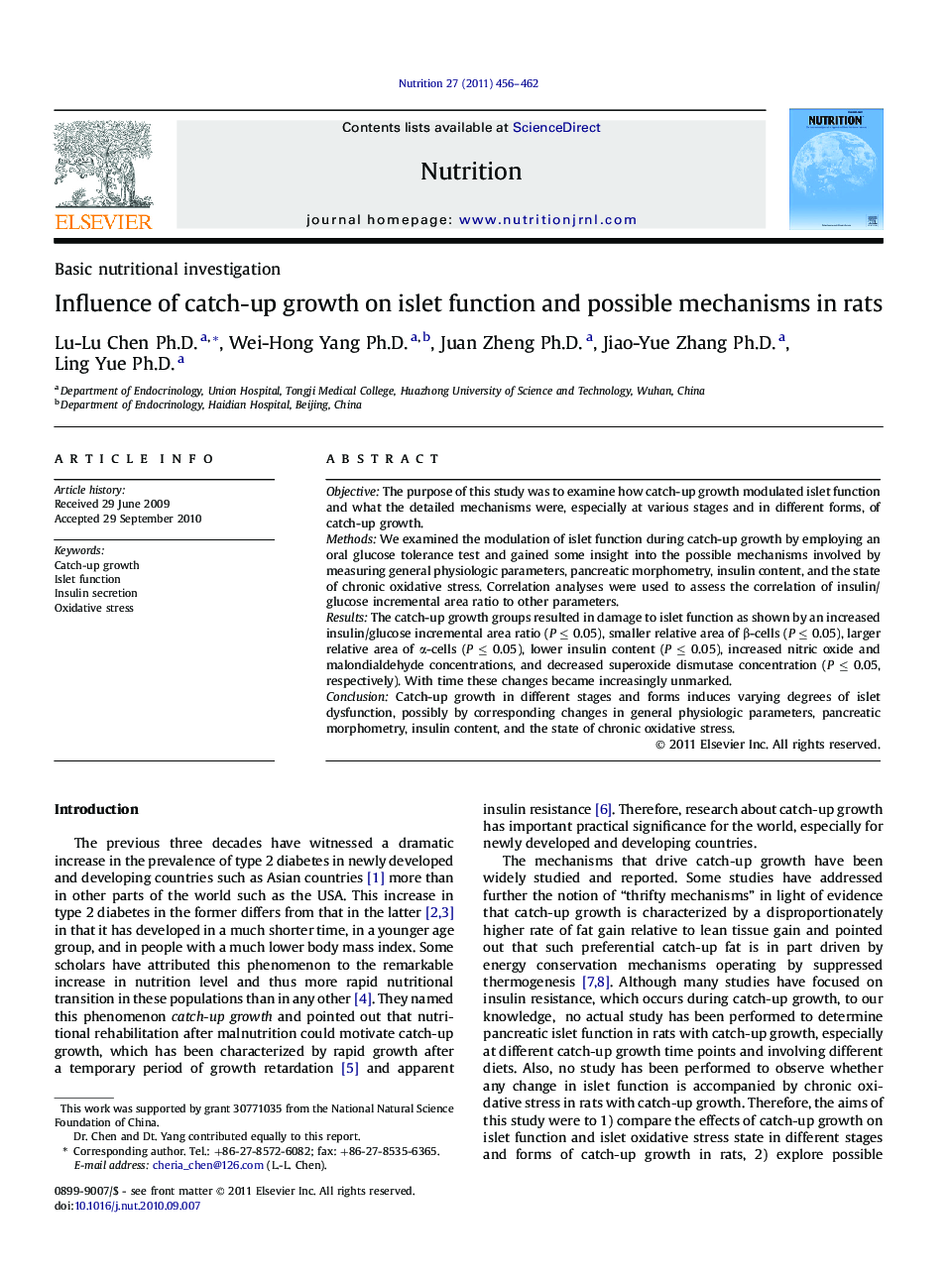| Article ID | Journal | Published Year | Pages | File Type |
|---|---|---|---|---|
| 3276573 | Nutrition | 2011 | 7 Pages |
ObjectiveThe purpose of this study was to examine how catch-up growth modulated islet function and what the detailed mechanisms were, especially at various stages and in different forms, of catch-up growth.MethodsWe examined the modulation of islet function during catch-up growth by employing an oral glucose tolerance test and gained some insight into the possible mechanisms involved by measuring general physiologic parameters, pancreatic morphometry, insulin content, and the state of chronic oxidative stress. Correlation analyses were used to assess the correlation of insulin/glucose incremental area ratio to other parameters.ResultsThe catch-up growth groups resulted in damage to islet function as shown by an increased insulin/glucose incremental area ratio (P ≤ 0.05), smaller relative area of β-cells (P ≤ 0.05), larger relative area of α-cells (P ≤ 0.05), lower insulin content (P ≤ 0.05), increased nitric oxide and malondialdehyde concentrations, and decreased superoxide dismutase concentration (P ≤ 0.05, respectively). With time these changes became increasingly unmarked.ConclusionCatch-up growth in different stages and forms induces varying degrees of islet dysfunction, possibly by corresponding changes in general physiologic parameters, pancreatic morphometry, insulin content, and the state of chronic oxidative stress.
